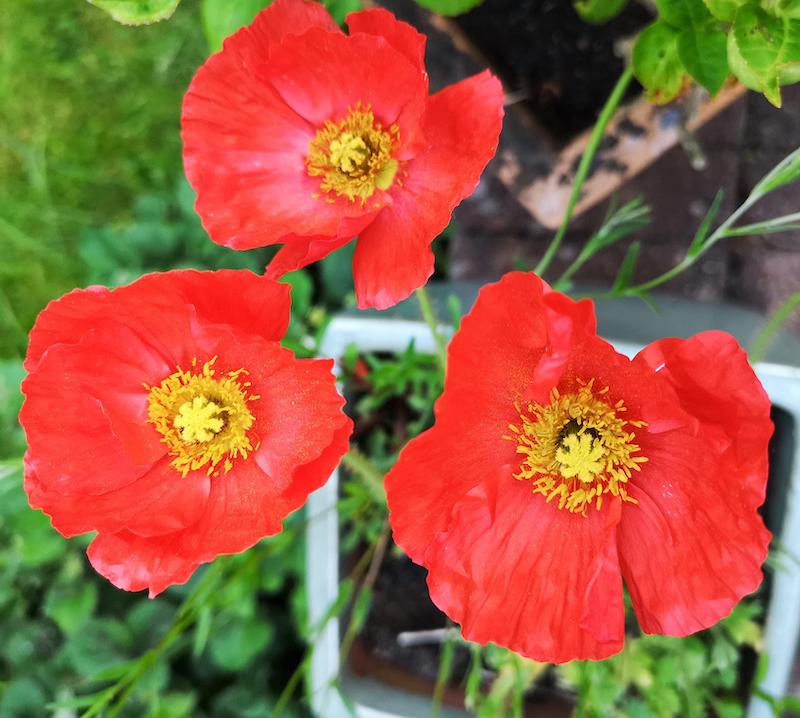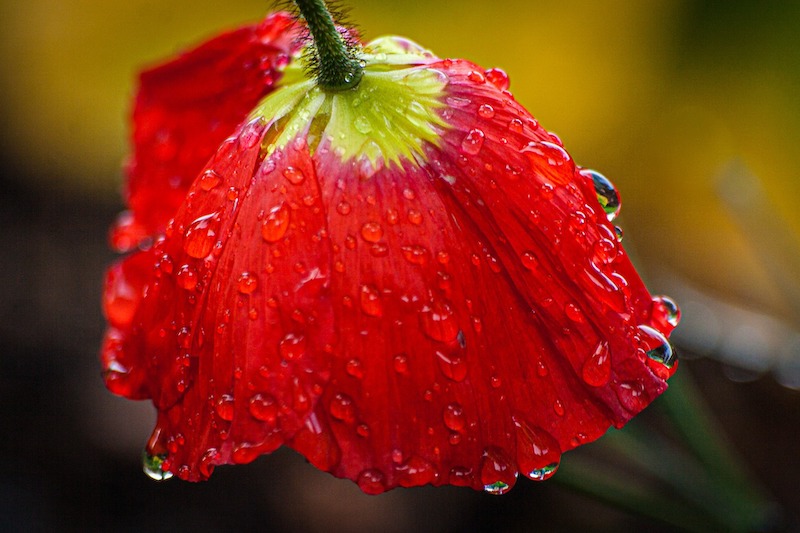Poppies can be planted in containers and successfully grown on a deck, patio or in a small garden. The annual varieties make good filler plants with their silver-green foliage and low-growing flowers. The perennial Oriental Poppies work perfectly as a thriller plant to anchor a mixed planting of early summer annuals.

Planting Poppies in Pots
Containers are best planted as early in the spring as possible to get a full season's worth of blooms. Place the container in full sun and away from overhanging roofs or downspouts that could wash out containers during a rainstorm. Any container will work as long as it has excellent drainage. Containers made from composite resins and plastics will last through harsh winters better than terracotta or pottery. A small 10-12 inch diameter pot is best for growing one Poppy as a focal point. Large planters and pots, 16 inches in diameter and up, will be needed for mixed plantings.
Best Soil For Poppies in Pots
All-purpose potting soil will work quite nicely in a well-draining pot. Adding rocks or gravel to the bottom of the pot doesn't actually help drainage. A layer of gravel on the bottom will actually form a perched water table that is impenetrable by the roots. The water settles too far away from the roots, and the plant eventually dies from lack of water, even if the gardener has been watering faithfully. Mulching the surface of the pot will have the same function that mulch in the garden does. The mulch shades roots and helps the soil retain moisture much longer. A nice fluffy mulch such as arborist chips, finely shredded bark, or organic compost will perform the best.
Caring For Poppies in Planters
Plants grown in containers rely completely on the gardener to supply the water, food, and winter care they need to thrive. Containers are an artificial growing condition for all plants and require more maintenance.

Watering Poppies in Pots
Potted poppies will need monitoring on an almost daily basis as the spring weather starts to warm up. Let the top 2-3 inches of soil dry out fully in between watering, which protects Poppies from root rot. Rain water in the early spring is best, but make sure that the pot is not washed out by heavy downpours or gutter downspouts. Water the pot until it is running out of the bottom drainage holes. This ensures that all of the soil is saturated.

Fertilizing Poppies in Pots
Even though Poppies planted in the ground prefer poor soil, in a container, they require regular feeding with diluted fertilizer. Any nutrients that are in the original potting soil will be leached out from regular watering. A monthly feeding with a diluted liquid fertilizer that has higher phosphorus levels will promote blooming and keep the root system healthy. Liquid seaweed or fish emulsion is available in most nurseries or home improvement stores. These natural fertilizers are more gentle for consistent feeding through the season.
Winter Care For Poppies in Pots
Poppies go dormant in the summer, and by the time winter hits, there are no signs of them. Poppies in containers will do the same disappearing trick. Poppies require minimal care over the winter to survive. They require a period of dormancy, so they do not need to be moved to a sheltered position or into an unheated garage or greenhouse. Watch for changes in drainage.
In a climate with heavy winter rains, make sure that the pots are not sitting in standing water on a patio or getting washed out by roof runoff or downspouts. Moving the pots to a drier location or placing the container up on bricks or ‘pot feet’ will improve drainage. Any pots that are cracked or broken from a harsh winter will need to be replaced as quickly as possible in the spring.
Growing Poppies Indoors
Poppies do not respond well to indoor conditions. These plants prefer cooler outdoor temperatures during the winter. Low humidity levels will also affect Poppies growing indoors. Poppies need a period of dormancy and winter cold to prepare and rest for the next year.
 |
Author Robbin Small - Published 7-26-2022 |
